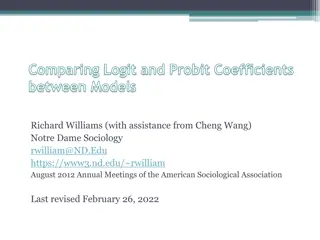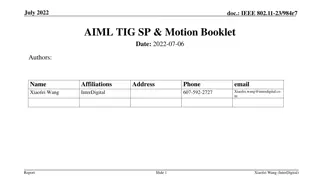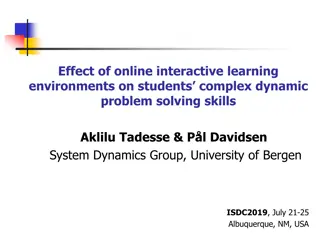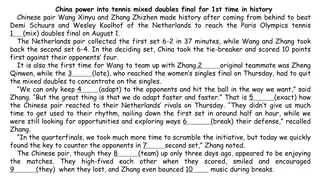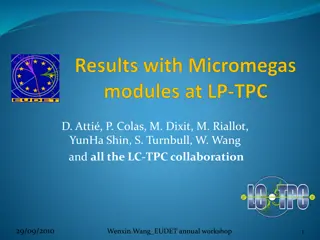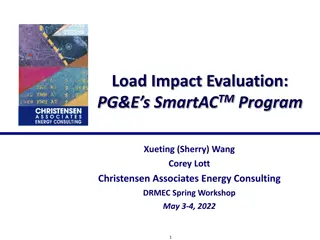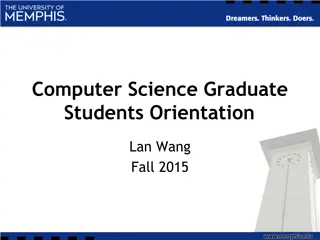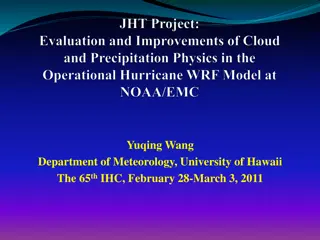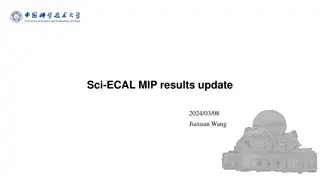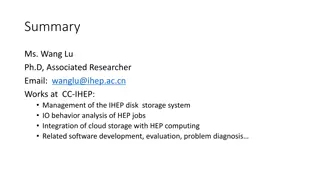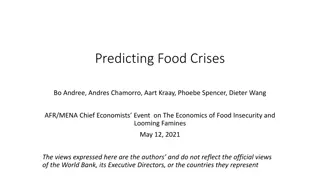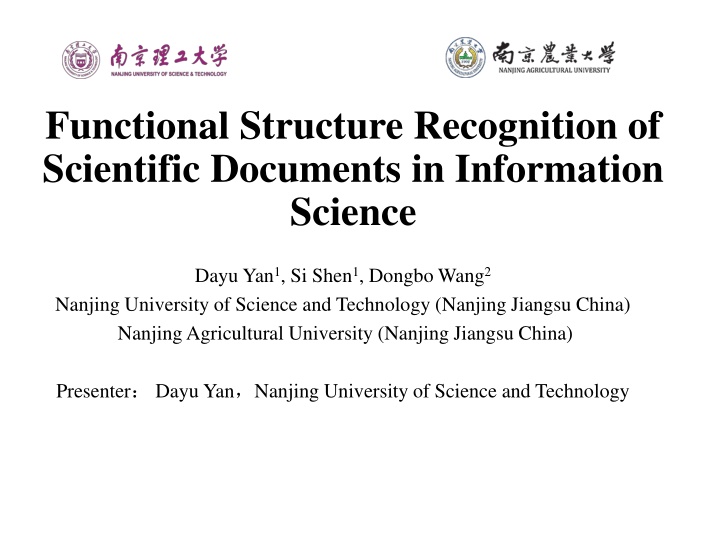
Functional Structure Recognition Methods in Scientific Document Analysis
Explore the use of machine learning and deep learning techniques for recognizing the structural and functional aspects of academic texts, focusing on the application of models like BERT, LSTM, and TextCNN. The research involves data sourcing, annotation, and processing to enhance the understanding of scientific documents.
Download Presentation

Please find below an Image/Link to download the presentation.
The content on the website is provided AS IS for your information and personal use only. It may not be sold, licensed, or shared on other websites without obtaining consent from the author. If you encounter any issues during the download, it is possible that the publisher has removed the file from their server.
You are allowed to download the files provided on this website for personal or commercial use, subject to the condition that they are used lawfully. All files are the property of their respective owners.
The content on the website is provided AS IS for your information and personal use only. It may not be sold, licensed, or shared on other websites without obtaining consent from the author.
E N D
Presentation Transcript
Functional Structure Recognition of Scientific Documents in Information Science Dayu Yan1, Si Shen1, Dongbo Wang2 Nanjing University of Science and Technology (Nanjing Jiangsu China) Nanjing Agricultural University (Nanjing Jiangsu China) Presenter Dayu Yan Nanjing University of Science and Technology
Introduction Research Background Automatic recognition of the structure and function of academic texts is an important issue in the field of natural language processing At present, machine learning and deep learning have become the mainstream methods of paragraph structure recognition. Just like BERT, fine-tuning requires a lot of data and computational power, and not enough data is available for all scenarios. prompt based downstream tasks have recently become a boon to small sample learning. Purpose of the research This research attempts to select best structure function recognition model with information techniques.
DATA Data source: This research obtained all the full texts of academic papers published in JASIST from 2010 to 2020 by using self-made Python program. Data annotation: divides the structure and function of academic texts into five parts: "introduction", "relevant research", "method", "experiment" and "conclusion", which are represented by "I", "R", "M", "E" and "C" respectively. Data process: BERT model is first invoked to complete automatic structural and functional labeling of academic full-text data from 2010 to 2020. In order to ensure the accuracy of labeling, manual verification is required. After manual review and collation, preliminary text data is obtained.
DATA Num. Type Count 1 introduction 62847 2 relevant research 90020 3 method 104061 4 experiment 152950 5 conclusion 84434
Method (1)Prompt Prompt reconstructs the template for different tasks, inputs human-made rules into the pre-training model, and makes the model better understand human instructions, bridging the gap between the training process and downstream tasks. s (2) SciBERT SciBERT is a BERT pre-trained using a total of 1.14 million scientific papers in biomedical (82%) and computer science (12%) directions and may be more suitable for natural language processing tasks in the direction of scientific papers . (3)LSTM LSTM network combines short-term memory with long-term memory by adding additional state c and using gate control. And to some extent, it solves the problem of disappearing gradient. (4) TextCNN TextCNN, as the name implies, is CNN for text tasks. Each word is mapped to a word vector by embedding, and then input to sofxmax layer through convolution layer and max-pooling layer to realize text classification.
Experiment Model Precision Recall F1-Value I 94.48% 96.07% 95.26% R M E C 76.06% 86.40% 80.90% 84.00% 85.71% 84.85% Prompt 86.62% 79.87% 83.11% 97.04% 91.11% 93.98% AVG I R M E C AVG I R M E C AVG I R M E C AVG 87.64% 87.83% 87.62% 92.09% 91.57% 91.83% 72.67% 87.20% 79.27% 83.33% 78.23% 80.70% SciBERT 81.88% 79.22% 80.53% 94.12% 88.89% 91.43% 84.82% 85.02% 84.75% 89.86% 71.26% 79.49% 55.10% 44.63% 49.32% 59.90% 35.62% 44.44% LSTM 51.49% 81.76% 63.19% 75.12% 87.71% 80.93% 66.13% 64.20% 63.47% 95.38% 69.66% 80.52% 65.49% 74.40% 69.66% 56.12% 90.48% 69.27% TextCNN 93.62% 57.14% 70.97% 80.66% 81.11% 80.89% 78.26% 74.56% 74.26%
Result analysis From the perspective of various structural functions, the effect of the introduction is the best, and the average of the three indicators can reach 95%, followed by the conclusion and method, and the effect of related research is the worst. The reasons are as follows: (1) In the function of relevant research, the role of paragraphs is to summarize the current research status at home and abroad, sort out the research context, discover new research questions, and provide theoretical support for the following research. However, it overlaps with the following methods to a certain extent. (2) The experimental function partially overlaps with the method function to a certain extent, which leads to the lack of effect of experimental function. Introduction, conclusion and other structure function repetition degree is low, so the effect is better.
CONCLUSION & FUTURE WORK Conclusion Prompt is more suitable for structure function recognition and the optimal F1-value is 95.26%. This research provides an idea for structure function recognition and information science in academic full text. Future Work (1) realize data augmentation (2)focus on how to make prompt templates


